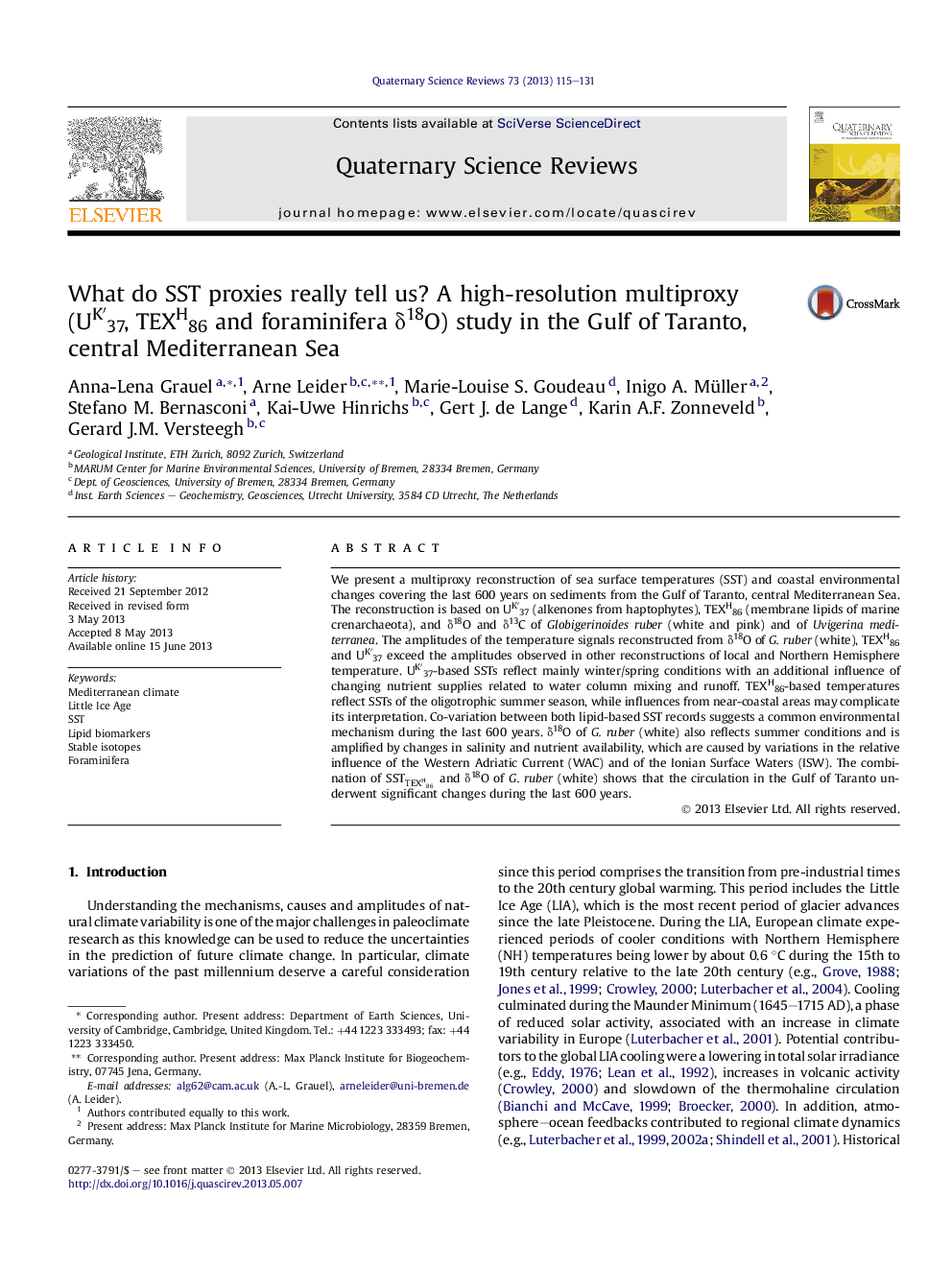| کد مقاله | کد نشریه | سال انتشار | مقاله انگلیسی | نسخه تمام متن |
|---|---|---|---|---|
| 4736786 | 1640861 | 2013 | 17 صفحه PDF | دانلود رایگان |

• We establish a SST reconstruction based on UK′37, TEXH86 and foraminifera δ18O.
• Variations in SST proxies are amplified vs. other temperature reconstructions.
• Co-variation between lipid-based SSTs suggests common environmental mechanism.
• Opposite trends SSTHTEX86SSTTEXH86 and SSTδ18OG.ruber suggest circulation changes.
We present a multiproxy reconstruction of sea surface temperatures (SST) and coastal environmental changes covering the last 600 years on sediments from the Gulf of Taranto, central Mediterranean Sea. The reconstruction is based on UK′37 (alkenones from haptophytes), TEXH86 (membrane lipids of marine crenarchaeota), and δ18O and δ13C of Globigerinoides ruber (white and pink) and of Uvigerina mediterranea. The amplitudes of the temperature signals reconstructed from δ18O of G. ruber (white), TEXH86 and UK′37 exceed the amplitudes observed in other reconstructions of local and Northern Hemisphere temperature. UK′37-based SSTs reflect mainly winter/spring conditions with an additional influence of changing nutrient supplies related to water column mixing and runoff. TEXH86-based temperatures reflect SSTs of the oligotrophic summer season, while influences from near-coastal areas may complicate its interpretation. Co-variation between both lipid-based SST records suggests a common environmental mechanism during the last 600 years. δ18O of G. ruber (white) also reflects summer conditions and is amplified by changes in salinity and nutrient availability, which are caused by variations in the relative influence of the Western Adriatic Current (WAC) and of the Ionian Surface Waters (ISW). The combination of SSTHTEX86SSTTEXH86 and δ18O of G. ruber (white) shows that the circulation in the Gulf of Taranto underwent significant changes during the last 600 years.
Journal: Quaternary Science Reviews - Volume 73, 1 August 2013, Pages 115–131